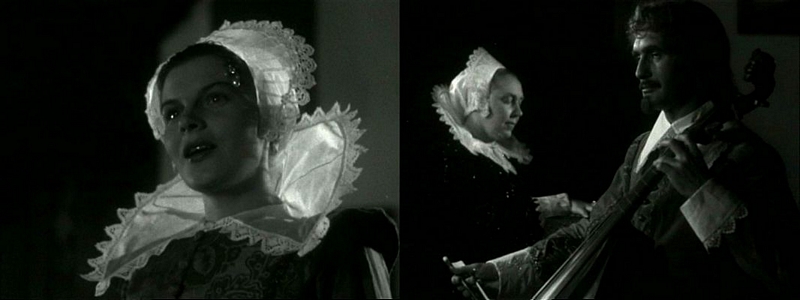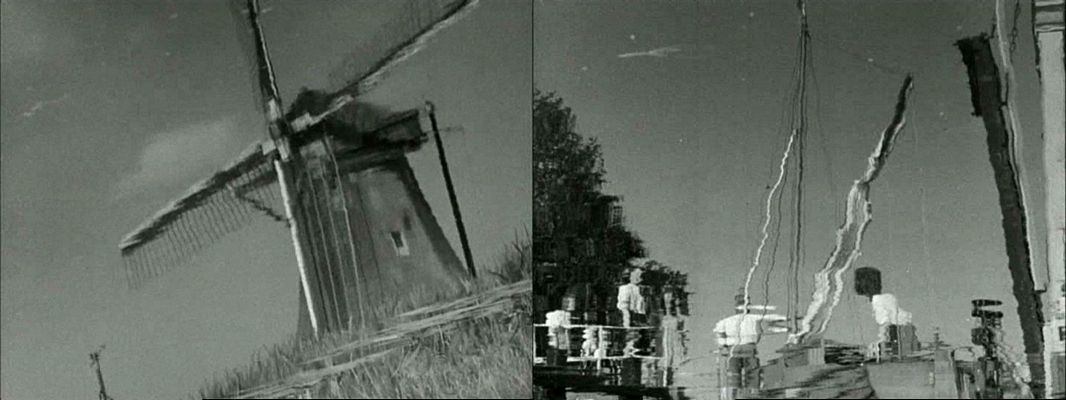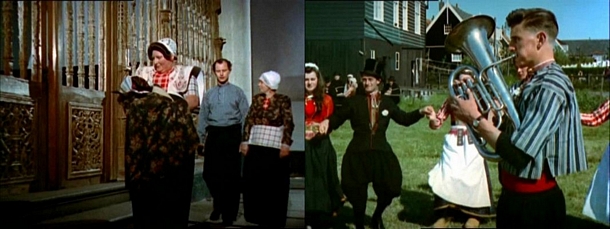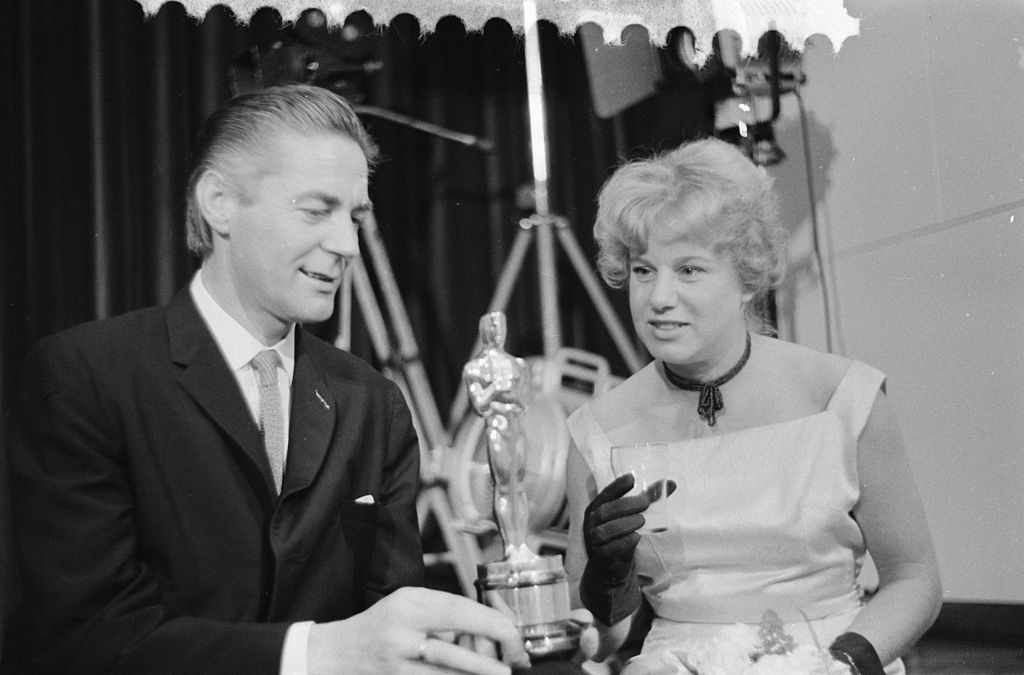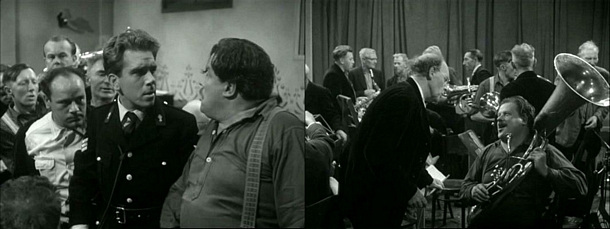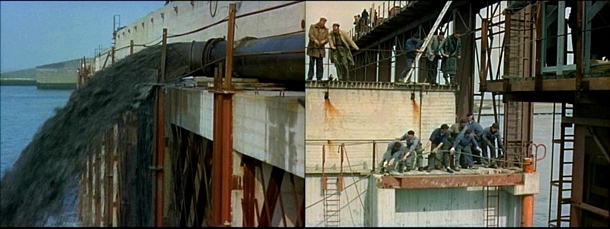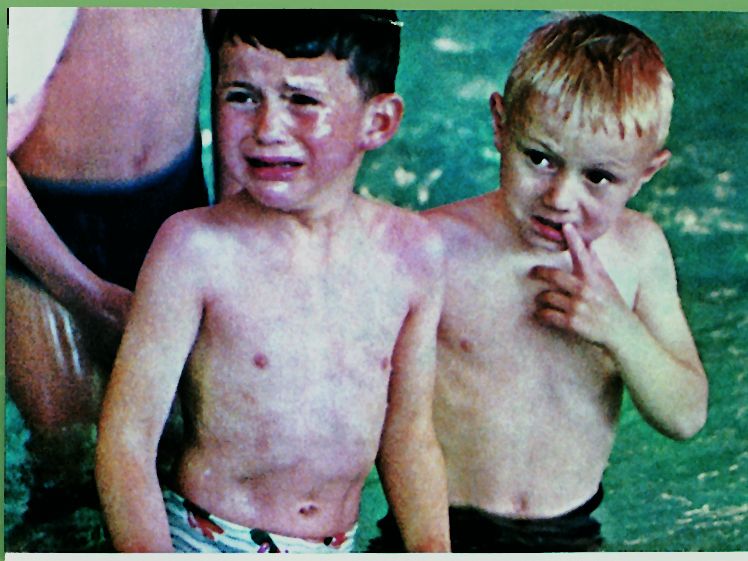Bert Haanstra’s movie career is a Dutch variation of the American myth of a bootblack turning into a millionaire. In this case it would rather be more like from a pastry to a movie director.
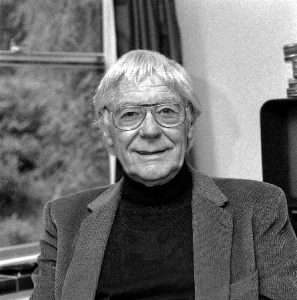 Haanstra was an outstanding and very original Dutch documentary filmmaker whose films conquered the world with a perfect sense of observation, humor and a unique harmony of picture and sound. What is very important – he can be compared to a diamond that has molded itself. Haanstra’s career is reminiscent of the career of many talented kids from poor villages or towns, which – thanks to their persistence – had been able to fulfill their dreams, be successful and gain international fame. He was born on May 31, 1916, in the small town of Holten. From his father, who was a painter, he inherited ability to draw and to tell stories through images. He later used this gift in his films.
Haanstra was an outstanding and very original Dutch documentary filmmaker whose films conquered the world with a perfect sense of observation, humor and a unique harmony of picture and sound. What is very important – he can be compared to a diamond that has molded itself. Haanstra’s career is reminiscent of the career of many talented kids from poor villages or towns, which – thanks to their persistence – had been able to fulfill their dreams, be successful and gain international fame. He was born on May 31, 1916, in the small town of Holten. From his father, who was a painter, he inherited ability to draw and to tell stories through images. He later used this gift in his films.
A big support he got from the German director Paul Schreiber, whom he met during the Second World War (in the resistance movement). Schreiber, a refugee from Germany, wanted to make a film in the Netherlands and asked Haanstra to work with him as an operator. Their movie “Myrte and the Demons” (1950) did not succeed, but thanks to half a year practice on editing in J.R. Arthur Rank Studio in London young Dutchman has learned a lot.
First steps
Haanstra directorial debut became short black-and-white documentary “De muiderkring Herleeft” (1948) – a story of the Muider Circle, a circle of intellectuals and artists, with the poet P.C. Hooft at the head, who in the first half of the 17th century used to meet at the literary evenings in the 13th century Muider Castle.
It was Haanstra’s own masterpiece (costumes were designed and made by his wife). A positive reception of this partially fictionalized documentary encouraged the young director to make another short film: “Spiegel van Holland” (1950). The film shows the country of windmills only through the landscapes being reflected in the rippling mirror of the water. In addition to high visuals and unique operator techniques, the work delights with the perfect synchronization of the image and music, composed by Max Vredenburg.
“Mirror of Holland”
For this documentary Haanstra received in 1951 the Grand Prix at the Cannes Inter-national Film Festival. Similar but less impressive is “Panta Rhei” (1951), immortalizing the movement – flowing clouds and water, fluttering leaves, waving plants and shifting shadow and light. In this movie Haanstra again showed his deep artistic sensitivity.
Multi-documentarist
The next productions show broadness of the interests of the Dutch director. They include art and artists, social issues, human, economic and industrial activities, as well as nature, with particular regard to animals. Haanstra did not confine himself to the document only, but he also created feature movies, with different results however.
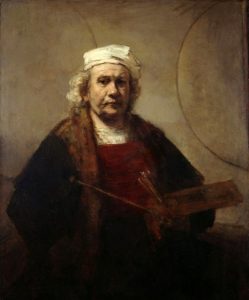 In the art sphere, being a painter himself, director paid a tribute to Rembrandt van Rijn, making a short document “Rembrandt, schilder van de mens” (1957), which was ordered by the Ministry of Art. He showed in it how personal experiences influenced the artist’s painting and himself as a man, what had been illustrated by Rembrandt’s self-portraits. Haanstra applied here an interesting method of smooth transition of one image into another (picture from the movie).
In the art sphere, being a painter himself, director paid a tribute to Rembrandt van Rijn, making a short document “Rembrandt, schilder van de mens” (1957), which was ordered by the Ministry of Art. He showed in it how personal experiences influenced the artist’s painting and himself as a man, what had been illustrated by Rembrandt’s self-portraits. Haanstra applied here an interesting method of smooth transition of one image into another (picture from the movie).
Before that happened however, in the early 1950s, director visited the Shell oil company in Venezuela to be there a director of the company films. In this period originate documents showing the search for crude oil, the construction and operation of drilling rigs: “Olieproductie – ontstaan en vergaan”, “Olieproductie – De opsporing van aardolie”, “Olieproductie – De proefboring” (1953) and “Olieproductie – Het olieveld” 1954). He also spent a month in Indonesia, which had just liberated itself from colonial dependence on the Netherlands. These exotic journeys resulted in the first film devoted to animals – “Strijd zonder einde” (1955). After returning to the country, Haanstra made a documentary about changes in the Zuiderzee bay, which had been fenced off from the North Sea and partially drained and turned into a polder. The title “En de zee was niet meer” (1955) shows the last moments of the bay, the fishermen traditions of and their transformation into farmers.
“En de zee was niet meer”
The 50s era was a happy time in the professional life of Bert Haanstra because they brought him in 1959 the first Oscar in the history of the Netherlands. He received it for “Glas” (1958) – documentary showing work at glass factories in Leerdam and in Schiedam.
Photo: National Archief, Den Haag, Wikipedia
This project followed the short, black-and-white promotional film “Over glas gesproken”, commissioned by the Royal Leerdam Glass Works. Fascinated by the interdependence of a man and a machine, director developed the theme into a colorful short movie, confronting the machine-made glass with the hand made one. He illustrated this particular process by the jazz music of Paj Jacobs, and thanks to the appropriate fitting obtained an interesting choreographic effect. The original style of the Dutch man became visible with an extraordinary strength.
A feature – successes and failures
In 1958 Haanstra faced another challenge – a feature. His debut in the plot, the comedy “Fanfare”, proved to be a great success and was even nominated for the Golden Palm of the Cannes International Film Festival. The film tells the story of two rival village orchestras fighting with each other with impure methods. The action takes place in the village of Giethoorn (read also: Fanfare in Giethoorn, Giethoorn by boat), which has no roads but channels, what was used by Haanstra for additional comic effect. The director was one of the screenwriters, but as he did not feel comfortable in the plot, he consulted on the script with the British director Alexander Mackendrick. In terms of the box office “Fanfare” is still number 2 in the Netherlands on the list of the most popular Dutch movies ever.
“Fanfare”
Encouraged by this success, Haanstra shot yet another feature, “De zaak M.P.” (1960), which tells the story of the robbery of the Manneken Pis, the famous Brussels statue of a pissing boy. But this movie was for dramaturgical reasons weaker, and along with the “Dokter Pulder zaait papavers” (1975) and “Een pak slaag” (1979) – both based on Anton Koolhaas’ novels – was not very successful. The cold reception of the latter title and the disappointment caused a heart attack, after which director had to recover for several months.
The Netherlands – a country, people and their challenges
The lack of good scripts forced Haanstra to drop the plot for a whole decade and return to the documentary in which he felt safer and was more successful. In “Delta Phase I” (1962) Haanstra presented in an attractive way the construction of a dam linking two islands and blocking the south-west of the Netherlands from the North Sea. It was a part of the great Delta Project (1958-1986), which once and for all would protect the lowland Netherlands from flooding it by the waters of the North Sea.
“Delta Phase I”
But already 10 years earlier, in “Dijkbouw” (1952), Haanstra showed how the dams were built in Zealand. It is a modest, black and white film, but very respectful of the nation, which originally erected its impressive dams at the expense of a heavy physical labor.
For those less interested in water engineering, the great offer was – and still is – the hilarious “ZOO” (1962), in which director confronted behavior of animals in cages with behavior of people mocking them, showing that monkey grimacing is not only a specialty of those animals. The picture was filmed with a hidden camera, and the picture had been illustrated by Jacobs’ music, again perfectly integrated into action. At the Berlin International Film Festival this documentary had been awarded by the FIPRESCI and the Youth Film Award.
The following year two more brilliant documentaries were created, this time devoted to the specialty of the Dutch society. In “Alleman” (1963) Haanstra portrayed Dutch people, filming them from a hidden camera. We watch them during their daily activities and during leisure, at the game, on the beach or on ice skating, and their behavior is explained by the playful, irony commentary written by the writer Simon Carmiggelt. The film received a Golden Bear Award at the Berlin International Film Festival and was nominated for Oscar.
The feature-length “De stem van het water” (1966) shows the Dutch as being forced to continually struggle with the water, which can be very dangerous – as the audience learns right at the beginning. There are many heroes in the movie: people resting on the water and living out of the water, like fishermen and barges, athletes, but the most memorable is a few years old boy taking his first lesson of swimming. Frightened up to tears, the kid is afraid to dive into the water, and the great Swedish director Ingmar Bergman said about this intriguing scene, that it surprised him that document could create such a strong emotional tension.
To cheer up the thrilled viewer the same boy is also shown at the end of the film, when after a year he makes a beautiful jump to the water from the trampoline. The film was received by the Dutch audience with great enthusiasm. Later Haanstra returned several times to the subject of the Netherlands. One of the fine examples is “Nederland”, implemented in 1983 by the Ministry of Foreign Affairs – a promotional, devoid of commentary “postcard” from the country of windmills. It shows the Netherlands in a nutshell, showing the main tourist attractions, monuments and modern architecture, industry, agriculture, polders and people.
Among animals
The 70s and 80s brought a partial change in the interest of the Dutch filmmaker, who turned his attention to the animals. The nature movie series was inaugurated by the Oscar-nominated documentary “Bij de beesten af” (1972), in which director concluded results of a three-year observation of monkeys to show how many similarities bind these animals to a human. For this film Haanstra made over 175,000 kilometers along and across the world, having previously studied dozens of scientific books. The theme of the next item of this series, “Nationale Parken … Noodzaak” (1978) become the Dutch national parks. Making this documentary was not easy, because to capture some animals on the tape Haanstra and his cameraman Anton van Munster spent their days in a small tent.
– This type of film consumes a lot of time, because you can direct people, but not animals – said director. But it did not diminish his passion for nature and his works include two more documentaries about monkeys. In 1984 he filmed “Chimps onder elkaar” – a movie about a family of chimpanzees from the Burger Zoo, in which he perfectly reflected the social relations with hierarchy and almost human intelligence of the herd of those animals. Three years later Haanstra realized “Een monument voor een gorilla” (1987), dedicated to the life of the lowland gorillas in the zoo and those living wild. In the 70s Dutch director made a grueling trip to Cameroon, where he spent several weeks on tracing gorillas with the local hunter and his family.
The last Haanstra’s film is “Kinderen van Ghana” (1988), commissioned by UNICEF. To his movie credits belong also a dozen of short films “The World of Simon Carmiggelt”, based on the Carmiggelt’s short stories.
Bert Haanstra died on October 23, 1997 in Hilversum, previously being honored – as the first laureate – of the Oeuvre Award, established by the Dutch Film Foundation. After his death the name of the award was changed to the Bert Haanstra Oeuvre Award. Presently it is given to young filmmakers and television creators.
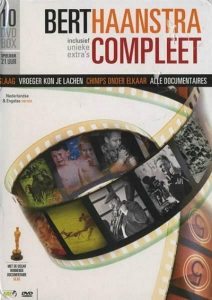 Anyone, who had the opportunity to become acquainted with the work of this eminent Dutch documentary filmmaker, enjoyed it’s not only high cognitive but also artistic values. In his own specific way Haanstra emphasized the dramaturgy of events with proper editing and sound, and his tasteful images were characterized by the painter’s sensitivity and imagination. He was a master of customs surveillance, able to perfectly exploit the comic aspects of the phenomena that captured his camera. In his films he is clearly showing a warm and friendly attitude towards people. Haanstra’s documents still have the value of capturing the Netherlands in the 50s and 60s, which is a country that has long since gone.
Anyone, who had the opportunity to become acquainted with the work of this eminent Dutch documentary filmmaker, enjoyed it’s not only high cognitive but also artistic values. In his own specific way Haanstra emphasized the dramaturgy of events with proper editing and sound, and his tasteful images were characterized by the painter’s sensitivity and imagination. He was a master of customs surveillance, able to perfectly exploit the comic aspects of the phenomena that captured his camera. In his films he is clearly showing a warm and friendly attitude towards people. Haanstra’s documents still have the value of capturing the Netherlands in the 50s and 60s, which is a country that has long since gone.
Renata Głuszek
Filmografie
Bert Haanstra
(☼ Espelo 31 mei 1916 – † Hilversum, 23 oktober 1997)
1949 De Muiderkring herleeft, 12 min. b/w Dutch
1950 Boer Pietersen schoot in de roos,
1950 Spiegel van Holland, 9 min. b/w muziek
1951 NL beeldhouwkunst, middeleeuwen, 1.47 min. b/w Dutch
1952 Panta Rhei, 10 min. b/w music
1952 Dijkbouw, 22 min. b/w Dutch, subtitels: Engels.
1953 Aardolie, ontstaan en vergaan, 10 min. b/w Dutch, subtitels: Engels.
1953 Opsporing van aardolie, 31 min. b/w Dutch, subtitels: Engels.
1953 Verkenningboring voor aardlolie, 33 min. b/w Dutch, subtitels: Engels.
1954 Het olieveld, 19 min. b/w Dutch, subtitels: Engels.
1955 En de zee was niet meer,
1955 De god Shiva,
1955 Strijd zonder einde, 24 min. colour Dutch
1957 Rembrandt schilder van de mens,
1958 Over glas gesproken, 28 min. b/w Dutch
1958 Glas, 10 min. colour music
1958 Fanfare, 1h23 min. b/w Dutch
1960 De zaak M.P.,
1962 Delta phase 1,
1962 Z.O.O., 11 min. b/w music
1963 Alleman, 1h19 min. b/w Dutch/English
1966 De stem van het water, 1h22 min. colour Dutch
1968 Retour Madrid,
1972 Bij de beesten af, 1:39 min. colour Dutch
1975 Dokter Pulder zaait papavers, 15 min. colour Dutch, subtitles English.
1978 Nationale parken: noodzaak, 27 min. colour Dutch
1979 Een pak slaag,
1983 Nederland, 15 min. colour Music
1983 Vroeger kon je lachen, 43 min. colour Dutch (Carmiggelt)1984 Chimps onder elkaar 1, 24 min. colour English
1984 Chimps onder elkaar 2, 27 min. colour English
1984 Chimps onder elkaar 3, 4 min. colour English
1987 Monument voor een gorilla,
1988 Kinderen van Ghana.
Hutte

